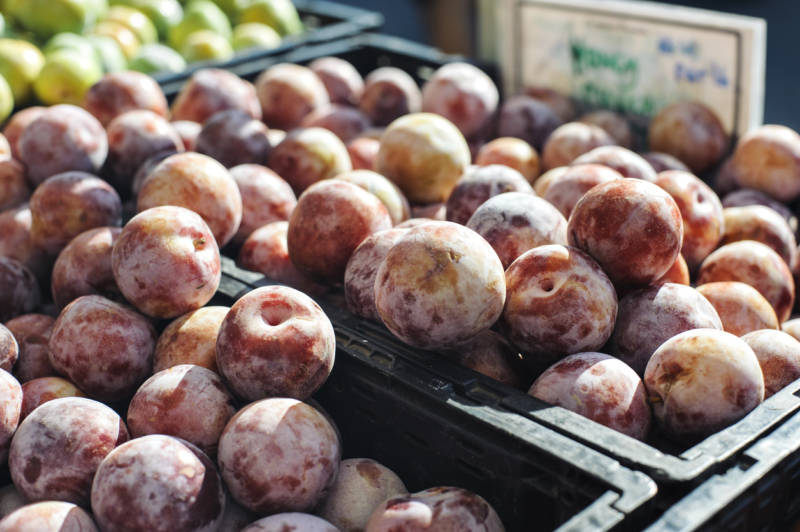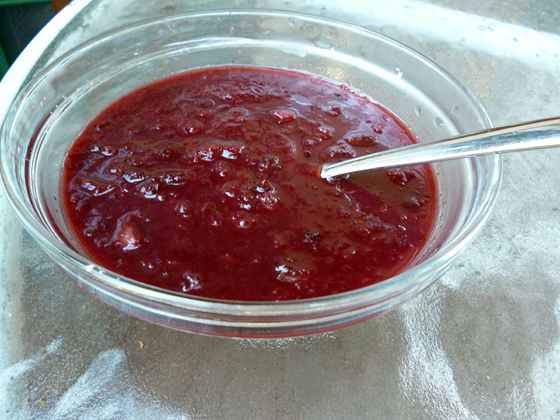Necessity, as they say, is the mother of invention, and never so vividly as when a farm school classmate shows up with 20 pounds of leftover pig roast, just after breakfast, when you and that day's cooking partner are sitting around, uninspired at cooking yet another quinoa-n-beans lunch for forty hungry farmers. Oh, the blessing of such generosity! And what to do with it? We had a lot of Southerners in our group that year, family-farm kids from Arkansas, Tennessee, and Texas, urban farmers from Alabama and Florida.
So, what do you do, California-style, with leftover pork but make pulled-pork sandwiches, on homemade whole-wheat rolls, drenched in homemade barbecue sauce with a side of fresh-picked cabbage slaw? This was a DIY kitchen, well stocked with olive oil, polenta, lentils, and spelt flour, but absolutely empty of anything resembling a pre-made product. Mustard was as close as we got to a condiment; anything special you wanted, from plain yogurt to ketchup and doughnuts, you had to make from scratch. We had a walk-in refrigerator overflowing with what we grew, but only with what we grew. Which meant no tomatoes until our own tomatoes were ripe. Which they weren't, at that early-summer moment. Little green golfballs might have made a tasty New York deli-style green-tomato pickle, but they sure weren't going to make barbecue sauce.
What we did have, however, was plums. Boxes of plums, buckets of plums, millions and billions and trillions of plums. Plums so ripe they were falling off the trees, plums that would, that same week, become sloppy magenta ammunition for the orchard crew's awesome, never-to-be-repeated Plum War. I looked at the overflowing, overripe heaps of plums, and thought, what's so different between a plum and a tomato? Didn't they both have the same thin skin, holding back a juicy gush of acid-snapped sweetness? Given time to collapse on the stove in a big pot, bathed in vinegar and brown sugar, seasoned with molasses, garlic, onions, salt and spices, they'd make the same tart-tangy sauce. With no time to lose, we chopped onions and garlic and threw them in a big pot to saute while we pitted the plums. Added the plums, apple-cider vinegar, a scoop of brown sugar, plus a glug of molasses, plenty of salt, and a mixture of allspice, cloves, and coriander, plus a cinnamon stick.
Simmering in a heavy pot on low heat, it coalesced into a thick, deep purple lava. We stirred frequently to keep it from sticking or burning, tasting as we went. Just a few minutes before lunch, it was ready: spices tamed, plums, garlic, and vinegar married into something tangy, sweet, and just a little spicy. We slathered it over the pork, brushed it lavishly over slabs of grilled tofu, put out the buns and slaw, poured the iced sweet tea.
Afterwards, the 19-year-old from Nashville came into the kitchen to hug us both. "That was the BEST lunch we've had this whole time," he drawled. Plum-stained and sweaty, we were happy to hear it.

